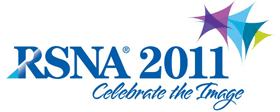
Abstract Archives of the RSNA, 2011
LL-ERS-WE3B
Acute Orbital Infections: Diagnosis with CT in the Emergency Setting
Scientific Informal (Poster) Presentations
Presented on November 30, 2011
Presented as part of LL-ERS-WE: Emergency Radiology
Jose Armando Alvarado Rosas MD, Presenter: Nothing to Disclose
Agustina Vicente Bartulos MD, Abstract Co-Author: Nothing to Disclose
Juan S. Martinez San Millan MD, PhD, Abstract Co-Author: Nothing to Disclose
To evaluate the CT role in diagnosis of acute orbital infections in the emergency department.
To review the classification, pathophysiology, causes and clinical presentation of acute orbital infections.
To describe and illustrate the imaging findings of acute orbital infections.
Institutional review board approval was obtained for this retrospective study from January 2007 to December 2010. Sixty six patients (36 male patients, 30 female patients; aye range, 0.6-90 years) who underwent a radiological study with orbital CT in the emergency room, because they were suspected of having acute orbital infections. Clinical critreria included were: soft tissue swelling with eyelid edema, fever, proptosis, chemosis, blurred vision and decreased visual acuity, alterations in ocular motility, changes in ocular fundus and systemic disease.
Overall, 27 (40.9%) patients of 66 patients had CT findings of preseptal (periorbital) cellulitis exclusively. In the remaining patients, 25 (37.8%) had signs of orbital (postseptal) cellulitis, 5 (7.6%) patients had subperiosteal abscess and 6 (9%) patients had an orbital abscess. Only 3 patients developed several complications, two of them had thrombosis of the superior ophthalmic and the third patient had a frontal cerebral emphyema.
The localization of the orbital infection was 45.5% in the right side, 53% in the left side and bilateral in 1.5%.
Sinusitis was the most commonly associated disease (50%), the maxillary sinuses and ethmoid air cells were involved in 75.8%, the frontal sinus in 42.4% and the sphenoid sinus in 24.2%. Other pathology associated: traumatic pathology (3%), postoperative complications (3%), herpes zoster (4.5%), other infectious processes (4.5%) and foreign bodies (1.5%).
CT is the more accessible and suitable diagnostic test to study the acute orbital infections in the emergent setting. Understanding the imaging findings is crucial for their accurate diagnosis and optimal treatment, to avoid permanent visual loss and other potentially devastating consequences.
CT is the first-line modality for radiologic evaluation of the acute orbital infecions, and is recommended in the initial evaluation in the emergent setting
Alvarado Rosas, J,
Vicente Bartulos, A,
Martinez San Millan, J,
Acute Orbital Infections: Diagnosis with CT in the Emergency Setting. Radiological Society of North America 2011 Scientific Assembly and Annual Meeting, November 26 - December 2, 2011 ,Chicago IL.
http://archive.rsna.org/2011/11005345.html

